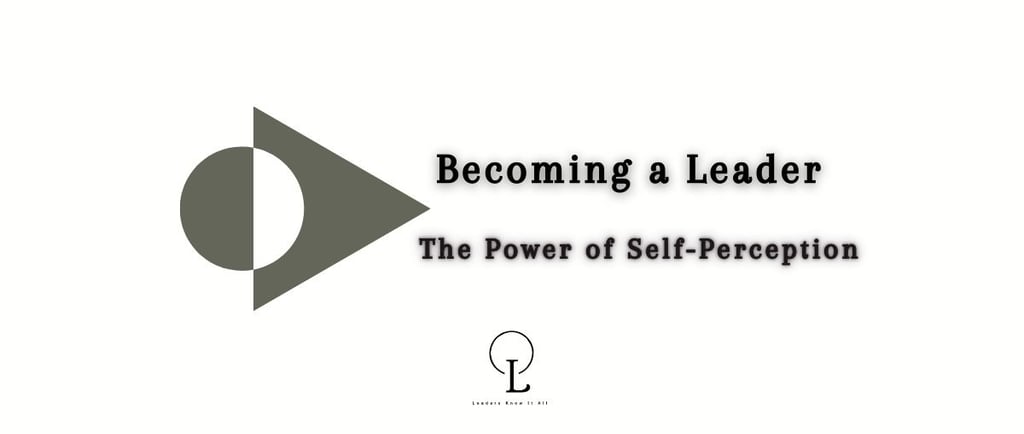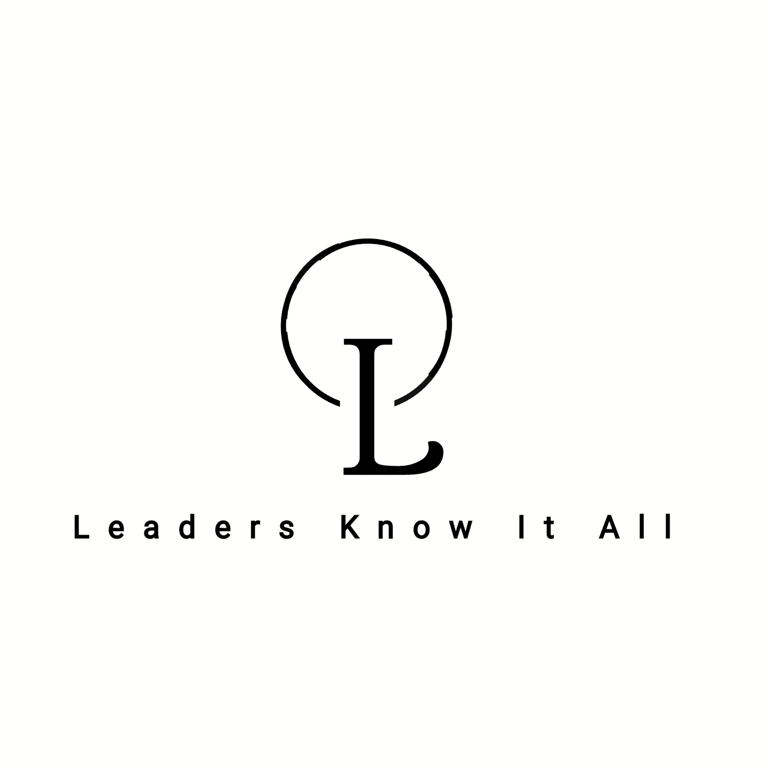Becoming a Leader: The Power of Self-Perception
Our self-perception shapes our thoughts, attitudes, and behaviors. If we see ourselves as capable and confident leaders, we are more likely to take on leadership roles and responsibilities. On the other hand, if we doubt our abilities or see ourselves as followers, we may shy away from opportunities to lead. Self-perception also influences how others perceive us. When we project confidence and belief in our leadership abilities, others are more likely to trust and follow us. People are naturally drawn to those who exude leadership qualities, such as vision, decisiveness, and the ability to inspire and motivate.
LEADERSHIPSUCCESSHOW TO BECOME A GOOD LEADERLEADERSHIP TRAITSLEADERSHIP SKILLSLEADERLEADERSHIP QUALITIESHOW TO BECOME A LEADERBECOMING A LEADER
leaders know it all
1/14/20243 min read


Leadership is not just a title or a position, but a state of mind.
It starts with how we perceive ourselves and the beliefs we hold about our own capabilities. The saying, "You are what you think you are," holds true when it comes to leadership. When we think of ourselves as leaders, we begin to embody the qualities and traits that define effective leadership.
However, simply thinking about being a leader is not enough to yield results. It requires action and a commitment to personal growth and development. In this article, we will explore the power of self-perception in becoming a leader and the steps you can take to turn your thoughts into tangible outcomes.
The Impact of Self-Perception
Our self-perception shapes our thoughts, attitudes, and behaviors. If we see ourselves as capable and confident leaders, we are more likely to take on leadership roles and responsibilities. On the other hand, if we doubt our abilities or see ourselves as followers, we may shy away from opportunities to lead.
Self-perception also influences how others perceive us. When we project confidence and belief in our leadership abilities, others are more likely to trust and follow us. People are naturally drawn to those who exude leadership qualities, such as vision, decisiveness, and the ability to inspire and motivate.
Steps Towards Leadership
1. Define Your Leadership Vision:
Start by defining your vision of leadership. What kind of leader do you want to be? What values and principles will guide your actions? Having a clear vision will help you stay focused and motivated on your journey towards leadership.
2. Identify Your Strengths and Areas for Growth:
Take an honest inventory of your strengths and weaknesses. What are your natural talents and skills that can contribute to your leadership? What areas do you need to improve? Being self-aware allows you to leverage your strengths and work on developing the necessary skills to become an effective leader.
3. Seek Opportunities for Growth:
Leadership is a continuous learning process. Look for opportunities to grow and develop your leadership skills. This can include taking on new projects, seeking feedback from mentors or colleagues, attending leadership workshops or seminars, or pursuing further education in your field.
4. Take Initiative:
Leaders are proactive and take initiative. Look for ways to contribute and make a difference in your organization or community. Volunteer for leadership roles or projects that align with your interests and goals. By taking action, you demonstrate your commitment to leadership and gain valuable experience along the way.
5. Develop Your Communication Skills:
Effective leaders are skilled communicators. Work on improving your verbal and non-verbal communication skills. Practice active listening, clarity in expressing your ideas, and the ability to inspire and motivate others through your words. Communication is a vital tool for building relationships and influencing others.
6. Build a Supportive Network:
Surround yourself with like-minded individuals who share your aspirations for leadership. Seek out mentors and role models who can provide guidance and support. Engage in networking activities and join professional organizations or communities where you can connect with others who are on a similar leadership journey.
7. Embrace Continuous Learning:
Leadership is a lifelong journey of learning and growth. Stay curious and open to new ideas and perspectives. Read books and articles on leadership, attend conferences or webinars, and engage in ongoing professional development. The more you invest in your own learning, the more you can bring to your role as a leader.
Overcoming Challenges
Becoming a leader is not without its challenges. It requires perseverance, resilience, and a willingness to step outside of your comfort zone. Here are a few common challenges you may encounter and strategies for overcoming them:
1. Self-Doubt:
It is natural to have moments of self-doubt on your leadership journey. However, remember that confidence is built through action. Focus on your strengths and past successes, and use them as a foundation for building your leadership abilities.
2. Fear of Failure:
Leadership involves taking risks and making tough decisions. Embrace failure as a learning opportunity and a stepping stone towards growth. Learn from your mistakes, adapt, and keep moving forward.
3. Resistance from Others:
Not everyone may be supportive of your leadership aspirations. Stay true to your vision and values, and surround yourself with those who believe in your potential. Seek feedback and constructive criticism, but also learn to filter out negativity that may hinder your progress.
To conclude
Becoming a leader starts with how we perceive ourselves. By thinking of ourselves as leaders and taking intentional steps towards growth and development, we can transform our thoughts into tangible outcomes. Remember, leadership is not just a destination, but a continuous journey of self-discovery and learning. Embrace the challenges, stay committed, and watch your leadership potential unfold.
Love and Light
LKIA 🧡
